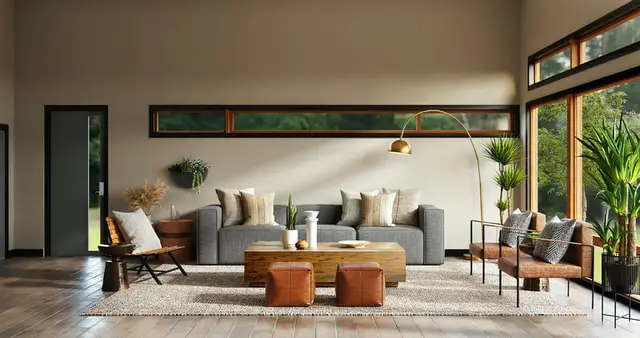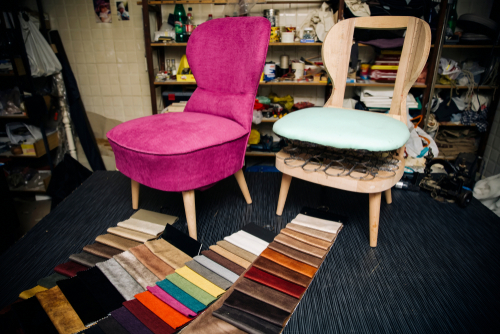Furniture is so much a part of our lives, both at work and at home, providing us with somewhere to sit, sleep, eat and work at and store various items. It provides comfort and warmth as well as convenience. It adds to the style of a home or office and, as such, it may be uniquely tailored to the needs of those who use it.

So what is furniture, in a nutshell?
Furniture has been defined by Bruce Peters from the company Sofas&Sectionals as “… movable equipment that is created to make a person’s office or home more suitable and comfortable for living or working.” He continues with a history of furniture styles and various types of furniture, which is well worth reading. It is clear that furniture has evolved from very basic stone, iron and wood creations to the multi-material items we can buy today. Whilst most furniture is designed for comfort and leisure, there are always items which are designed for impact value, meant to stand out as being uniquely individual, although not always entirely practical.
Furniture styles evolve with each era
It is clear that the styles of furniture have continued to evolve steadily over the decades, from crude and rudimentary to flamboyant and overstuffed to clean lines and sometimes minimalist upholstery, and doubtless it will continue to evolve over the coming years. There are always new designers, and furniture changes with the style of the homes being built. Where once large items of furniture were popular and considered to be the height of luxurious living, for instance during the Victorian era, furniture in the 21st century has tended to become more compact, with sleeker, cleaner lines, able to fit smoothly into smaller living spaces as our living areas shrink in size yet become more functional.
Furniture is more than just wood and upholstery
Modern furniture includes many different kinds of materials, including iron, stainless steel, plastics and plexiglass, wicker, bamboo, wood, or the more affordable and eco-friendly plywood, chipboard, plywood, laminated board and hardboard. Using solid wood, whilst beautiful and providing a way of preserving this incredible resource through generations, does have its drawbacks in the form of swelling (if the humidity around the wood is greater than that within the wood itself), shrinking as it continues to naturally dry out, which leads to splitting. Solid wood is therefore prone to movement – although infinitesimal – whilst well-manufactured and good-quality made-up materials are considered as inert. Solid-wood veneers are often used on the raw edges or as a covering for manufactured materials, making them more appealing and hiding the fact that they are not made of solid wood throughout.
Furniture design and manufacture involves different trades
The making of furniture depends on many different trades, including carpenters, upholsterers, ironmongers, specialists who work with metals such as copper, stainless steel, aluminium, etc., and furniture designers. Design will never be static as it is constantly evolving to meet different needs and trends. Carpenters and engineers may work together, for instance, to create expandable tables which can increase in either width or height as required, yet fold down to a much smaller item when not required. Collapsible beds such as the Murphy Bed, which folds up vertically into the width of a cupboard when not in use, are also becoming more popular in small spaces, and a new design has appeared which converts a chest of drawers into a single-, double- or queen-size bed – and they look attractive when not in use, which is a great bonus. Modern design engineering has also provided chairs and even table-and-chair sets which fold up into flat panels which are free-standing or wall-mounted and sofas which are expandable from one to two or three-seats if needed. Even stairs have been engineered to fold up horizontally and lock flat against the wall when not in use. And let’s not forget nesting tables, all of which are totally functional in their own right, yet can be fitted together as one single unit when not required. It seems that, more and more often, designers are partnering with engineers in turning their creative skills to the manufacture of space-saving yet fully functional furniture which is perfect for small spaces.
There really is no need for furniture to impede your space unnecessarily
Furniture is an essential part of our daily lives, whether we are at work or at home, but it need not be bulky or take up valuable space when it is not needed. We can still comfortably entertain friends and family in a small space, with enough seating and dining space to accommodate everyone, yet fold most of it away neatly and efficiently afterwards into an area of perhaps one-quarter of its full size. Now THAT is what most of us would call genius! This doesn’t mean that such furniture need be stark and unattractive – it can have decorative elements on display when in use, so still be appealing visually. It seems that, when it comes to modern furniture, the need to combine aesthetics, efficiency, functionality and space-saving elements into the design are simply a new avenue to explore for those who think outside of the box. It seems that the coming years are going to be challenging for furniture designers and will doubtless bring about interesting and innovative additions to our living and working areas which I, for one, am keen to see. It’s all part of evolution and forward-movement of the best kind …
